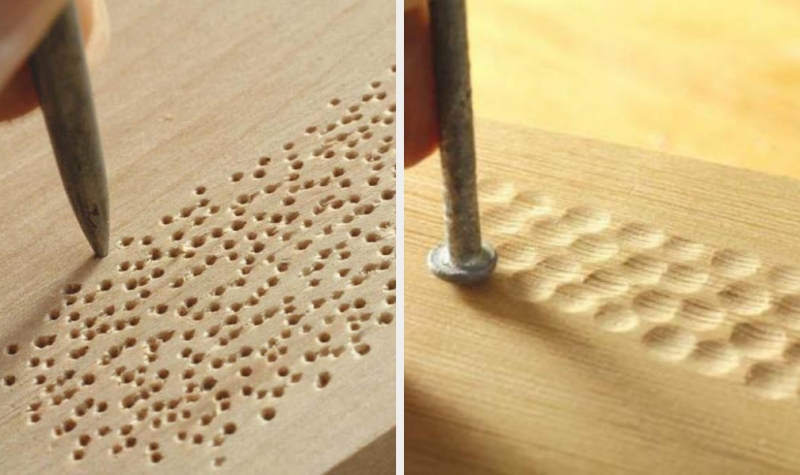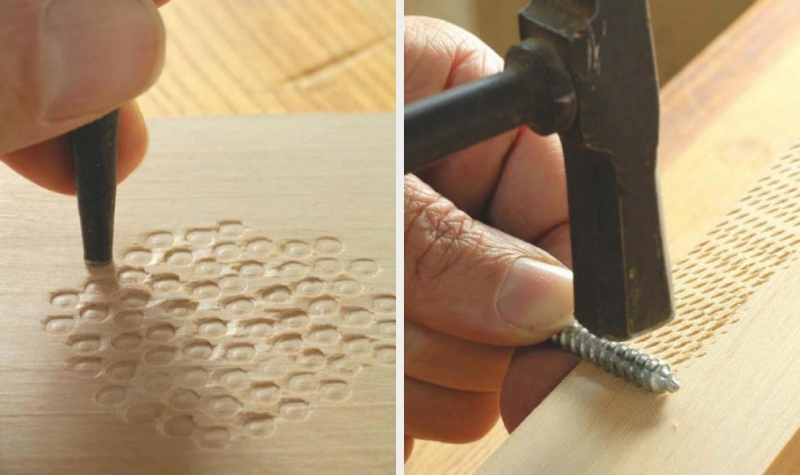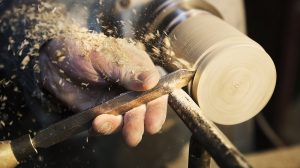Wood texturing can also be done with simple tools that are usually used for other operations. The idea is that you can extend the use of the tools you already have. Wood is extremely willing to accept a variety of treatments surface. It is a material that can be shaped and textured quite easily and in many ways. The existence of embossed decoration on a wooden surface is recognizable both visually and to the touch. With imagination, wood texturing can be realized in many forms. By incorporating a texture, you can add depth, define the bevel or frame of a piece, create design details, mask machining flaws or unwanted imperfections in the wood.
A pestle, a poanson, a dowel or a thicker nail, even with the point chopped off, can be used to make small indentations in the wood, and a screw can be used to notch the edges.


A chisel can also be used to make uneven notches on the surface of the wood.

With this kind of wood ornamentation we can break the uniformity of a plain surface by adding contrasting accents and details using the most common and handy tools and parts.
Skilful hands can also use power tools to achieve more uneven, but equally delicate, contoured effects.

In situations where some natural defects or small faults in workmanship need to be covered, masking them by such operations is a justified addition and an accepted aesthetic solution.
This kind of manual work is quite laborious and time-consuming, and is much more suitable for decorating small surfaces.
image source: canadianwoodworking.com




































http://www.sergiuparchet.sunphoto.ro good wooden models